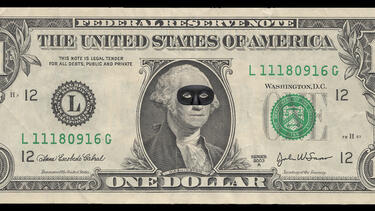Does Fake News Sway Financial Markets?
Deceptive articles on investment websites appear to temporarily boost stock prices for small firms, according to research by Yale SOM’s Marina Niessner and Tobias Moskowitz. These fakes may erode public trust in real financial analysis, the research suggests.

The phenomenon of fake news isn’t limited to the political realm. Deceptive articles purporting to offer independent financial analysis have emerged as well. For example, the U.S. Securities and Exchange Commission (SEC) reported last year that PR firms had paid writers to produce positive articles about their clients for investment websites without disclosing the compensation.
Marina Niessner, a finance professor at Yale SOM, wondered whether these promotional articles—which she terms “fake news”—affected financial markets. Many individual investors rely on investment websites for information about firms’ performance; if enough of them bought a stock because of fake news, it would cause the price to rise.
On the other hand, perhaps the market would self-correct. Professional investors would presumably be more likely to recognize deceptive articles than individual investors; if fake news caused prices to rise, they could quickly sell stock and drive the price back down.
In a recent study, Niessner’s team classified articles from the financial websites Seeking Alpha and the Motley Fool as real or fake. The researchers found that after fake news about small firms was published, the companies’ stock prices temporarily rose and then fell. The deceptive articles often coincided with press releases and insider trading, suggesting that those firms tried to artificially inflate prices and sell their stock in a “pump and dump” scheme. For small companies, “these knowledge-sharing platforms do seem to matter for financial markets,” Niessner says. “People get easily fooled by fake news.”
The misleading articles may have dampened people’s trust. After a scandal about deceptive articles on Seeking Alpha broke in 2014, the website’s real articles appeared to drive less trading activity than they had in the past. “The presence of fake news makes us more wary of trusting real news,” says Niessner, who collaborated with Shimon Kogan at the MIT Sloan School of Management and Yale SOM’s Tobias Moskowitz on the work.
To conduct the study, Niessner and her colleagues first needed a method to identify fake articles. The team found an algorithm developed by researchers at the University of Texas at Austin, which identifies language patterns used when people are being deceptive. For example, liars tend to use fewer “I” statements and shorter sentences. The algorithm assigns the text an authenticity score.
However, the software had not been tested on financial content. So Niessner’s team ran the algorithm on 171 known fake articles that had been identified by Richard Pearson, a Seeking Alpha contributor, and the SEC, as well as on 334 real articles by the same authors. Based on the authenticity scores, the researchers calculated the probability of each article being fake.
The algorithm classified 18 articles as fake, 17 of which were in fact fake. While the software missed many fake articles, its low false positive rate was encouraging. “We were quite surprised,” Niessner says. “It actually worked very well.” The team then ran the algorithm on about 203,000 articles from Seeking Alpha and about 148,000 from the Motley Fool to identify likely fakes.
Next, the researchers investigated the effect of articles classified as fake on financial markets. After fake news about small firms appeared, the companies’ stock prices increased by an average of 7% over 6 months and then dropped. For mid-sized firms, on the other hand, prices decreased by 5% over 10 months. Does that mean that fake news had no effect? Not necessarily, Niessner says; they may have prevented a steeper decline in the stock price that would have happened without those articles. Fake news about large firms did not appear to sway markets, perhaps because many analysts watch those companies closely, and a huge amount of trading would be needed to move stock prices. Niessner thinks it is unlikely that the articles prevented a decline in the large companies’ prices because misleading information would not prop up the stock indefinitely, and the researchers saw no significant change over a year.
The team then tried to determine the source of the fake news. Deceptive articles about small and mid-sized firms were more likely to appear around the same time as press releases from those companies, and insider trading activity increased shortly after the articles were published. The results suggest that employees had attempted to manipulate stock prices. No such link was seen for large firms, suggesting that individual investors had written the fake news articles about large firms.
Finally, the researchers studied how fake articles affected public trust. They monitored abnormal trading volume during the six months before the fake articles on Seeking Alpha were exposed and six months afterward. During the latter time period, trading activity following real articles dropped. Readers “seem to be more cautious,” Niessner says.
The study suggests that fake news comes with a large cost not just for financial markets but for society in general. A lack of trust in real news “is a big problem,” she says. “Exchange of information is very important.”